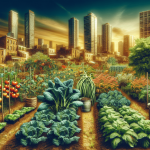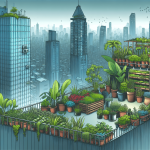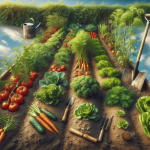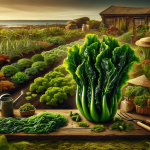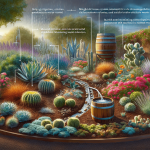This post may contain affiliate links. As an Amazon Associate, we may earn commissions from qualifying purchases.
Living in a small urban space doesn’t mean you have to give up your dream of having a flourishing garden. With a few clever tips and tricks, you can transform even the tiniest balcony or windowsill into a green oasis. From vertical gardening to choosing the right plants, this article will offer practical advice on how to make the most of your limited gardening area. Discover how to create a lush urban garden that brings you joy and connects you to nature, no matter the size of your space.
Choose the right plants
When gardening in small urban spaces, it is essential to choose the right plants that will thrive in a confined environment. Consider the size and growth habits of each plant to ensure they are suitable for containers. Opt for compact varieties that do not require excessive space to grow. These types of plants are perfect for small gardens as they can be easily accommodated in limited areas. Additionally, select plants that are known to thrive in containers, as they have the ability to adapt well to these environments. Lastly, consider vertical gardening options, such as climbing plants or plants with trailing habits, to make the most of the available space.
Utilize vertical space
In small urban spaces, utilizing vertical space is crucial to maximize the area for gardening. One way to do this is by installing hanging baskets or pots. These can be suspended from balconies, railings, or hooks on walls, allowing plants to grow downwards and create a visually appealing display. Another option is to use trellises or vertical planters. These structures provide support for climbing plants and allow for vertical growth, adding depth to your garden. Lastly, consider creating a living wall or green façade by attaching plants to a vertical structure, such as a wall or fence. This not only adds greenery but also acts as insulation for the building, improving energy efficiency.
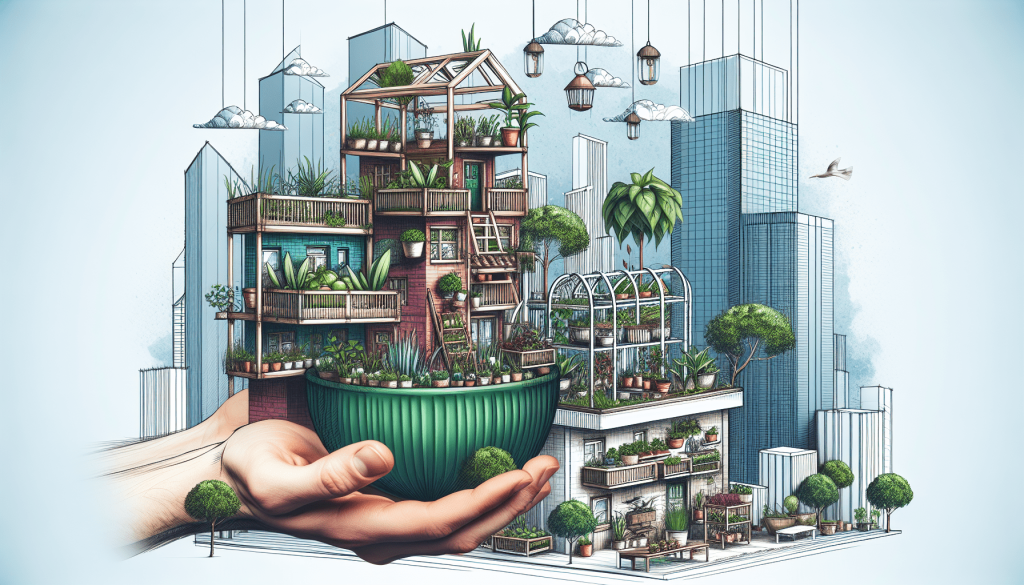
Container selection and arrangement
When gardening in small urban spaces, choosing the right containers is essential. Opt for appropriate containers that suit the plants’ growth requirements. Ensure these containers have proper drainage holes to prevent waterlogging, which can be detrimental to plant health. Additionally, consider arranging the containers strategically to optimize space. You can place smaller containers on shelves or hooks, hang them from walls or ceilings, or stack them vertically using a tiered shelving system. By arranging the containers effectively, you can make the most of the limited space available and create an aesthetically pleasing garden.
Soil and fertilization
Using quality potting soil is vital for the success of container gardening in small urban spaces. Potting soil provides the necessary nutrients and good drainage that plants need to thrive in containers. Consider adding organic matter, such as compost or well-rotted manure, to the potting soil to improve its fertility and moisture-retaining properties. Regularly fertilize container plants with a balanced, slow-release fertilizer to ensure they receive the necessary nutrients for healthy growth. Additionally, prevent soil compaction by using mulch or organic matter on the soil surface, which helps retain moisture and provides insulation for the roots.
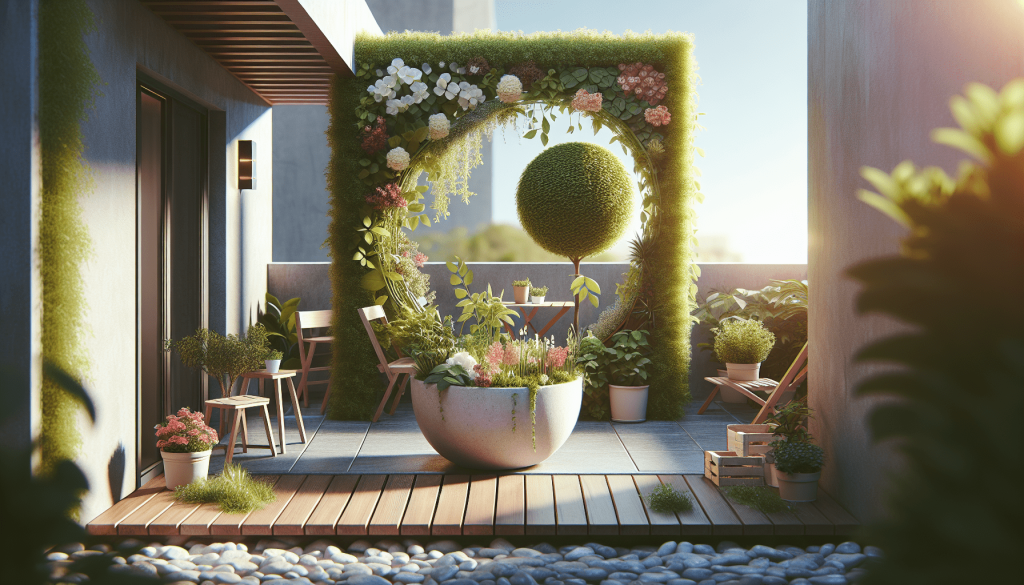
Watering and irrigation
Proper watering is a crucial factor in gardening, especially in small urban spaces where plants may have limited access to natural rainfall. Water plants correctly by ensuring thorough watering until the excess water drains out of the containers’ drainage holes. However, be cautious not to overwater, as this can lead to root rot. Consider using self-watering containers, which have a reservoir that holds water and allows the roots to draw moisture as needed. Another option is to install drip irrigation systems, which provide a consistent and efficient way to deliver water to plants. Additionally, consider using moisture-retaining additives, such as water-absorbing polymers or peat moss, to help maintain soil moisture levels and reduce water consumption.
Sunlight exposure
Assessing the available sunlight is crucial when gardening in small urban spaces. Observe the site throughout the day to determine the amount and intensity of sunlight that reaches your garden. Position plants strategically according to their sunlight requirements. Place sun-loving plants in areas with full sun exposure, whereas shade-tolerant plants should be positioned in areas with partial shade. If limited sunlight is an issue, utilize reflective surfaces, such as mirrors or white-painted walls, to redirect light to the plants. By carefully managing sunlight exposure, you can ensure the optimal growth and health of your container plants.
Pest control
Regularly inspecting plants for pests is essential to prevent infestations in small urban gardens. Check the leaves, stems, and soil for any signs of pests, such as chewed leaves, sticky residue, or pests themselves. Use natural pest deterrents, such as neem oil or insecticidal soap, to control common garden pests like aphids or spider mites. Implement companion planting, which involves growing certain plants together to repel pests or attract beneficial insects that help control pest populations. For example, marigolds planted near vegetables can repel aphids. Lastly, encourage beneficial insects, such as ladybugs or lacewings, by providing nectar-rich flowers and avoiding the use of broad-spectrum insecticides.
Organize and maximize space
To effectively utilize limited space in small urban gardens, it is essential to plan and design the garden layout. Consider the available space and layout your garden accordingly, taking into account factors such as sunlight exposure, accessibility, and aesthetics. Utilize vertical shelves or racks to create additional storage space for containers or gardening tools. Opt for multi-functional furniture or structures, such as benches with built-in planters or vertical garden walls. Additionally, make use of underutilized spaces, such as balcony corners or windowsills, by placing containers or hanging baskets. By organizing and maximizing the available space, you can create a functional and visually appealing garden in small urban settings.
Maintenance and care
Regularly monitoring and pruning plants is crucial for maintaining a healthy garden in small urban spaces. Check for any signs of disease, pests, or nutrient deficiencies and take appropriate action promptly. Monitor soil moisture levels regularly and adjust watering as needed to prevent drought stress or waterlogging. Deadhead flowers or remove spent crops to encourage new growth and prolong the blooming season. Provide support for plants when needed, such as using stakes or trellises for plants with weak stems. By providing proper maintenance and care, you can ensure the long-term health and vitality of your small urban garden.
Aesthetics and design
Creating an aesthetically pleasing garden adds joy and enhances the overall experience of gardening in small urban spaces. Choose complementary plant colors and textures to create visually appealing combinations. Incorporate decorative elements, such as colorful pots, statuary, or garden ornaments, to add interest and focal points. Create visual interest by incorporating different heights and layers in your garden design. For example, place taller plants towards the back and shorter plants towards the front to create depth. Lastly, consider the overall aesthetic of the space and choose plantings that complement the architecture or style of your urban environment. By paying attention to aesthetics and design, you can create a beautiful and inviting garden in your small urban space.

